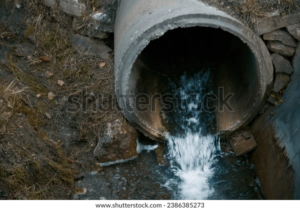Home » Posts tagged 'septic tank cleaning'
Tag Archives: septic tank cleaning
Hazardous wastes
Liquid Waste Disposal Perth is a complex task that can significantly impact the environment and human health. If disposed of improperly, toxic chemicals can seep into watercourses and cause irreparable damage.
The type of liquid waste your business generates will influence your chosen disposal method. For example, certain hazardous wastes need to be processed via solidification and stabilization.

Many liquid wastes contain dangerous components that can pose severe risks to humans and the environment. Those that are considered hazardous wastes are subject to strict guidelines regarding storage, transportation and disposal. Many of these dangerous substances can seep into groundwater and surface water sources, contaminating them. When this happens, it can disrupt aquatic ecosystems and harm marine life. It can also change the chemical composition of drinking water, which poses long-term health risks for human beings.
Hazardous wastes can come from a variety of industrial sectors, including mining, manufacturing, oil refining, and a range of other types of operations. They may include a number of pollutants, including heavy metals like lead, cadmium, and mercury. They might also contain organic compounds and radioactive substances.
The EPA regulates hazardous wastes through the Resource Conservation and Recovery Act (RCRA). There are four categories of hazardous wastes, each identified by an EPA-assigned code that indicates one or more of four regulatory characteristics: ignitable waste, reactive waste, corrosive waste and toxic waste. In addition to these categories, there is a category of wastes that are considered characteristically hazardous. These are commercial chemical products that are unused, but still possess certain characteristics such as acute toxicity and flammability.
Sanitary sewage is not considered a hazardous waste, but it does meet RCRA guidelines for solid waste. That said, it is not recommended that a company use this method of disposal as it can create offensive odors in the area of waste storage. This can upset residential neighbors and lead to complaints from them.
Inadequately disposing of hazardous wastes can wreak havoc on the environment. It can contaminate water sources that animals and people drink, leading to gastrointestinal illnesses or even severe poisoning from the contaminants in the fluids. It can also seep into the soil, disrupting plant growth and destroying natural habitats. It can also affect the balance of aquatic ecosystems and kill marine organisms.
Liquid Waste Disposal
There are a variety of ways that liquid waste can be disposed of, but only through the appropriate methods. For example, if it is burned in an open pit, it can release greenhouse gases and other pollutants into the air. The process of storing, transporting and disposing of liquid wastes must be done according to the guidelines set forth by the EPA and other regulatory agencies.
Liquid Waste Disposal is not a simple task, but it’s vital for protecting the environment and human health. Without proper procedures, waste fluids can pollute groundwater and surface water sources. This can disrupt ecological systems, cause biodiversity loss, and endanger drinking water supplies for humans. It can also seep into the soil and alter the composition of the ground, causing plants to die and reducing the amount of food produced by these areas. It can also contaminate groundwater and surface water sources, which humans then ingest through their drinking water. This can cause gastrointestinal illnesses, heavy metal poisoning and other serious conditions. It is important to follow the guidelines for liquid waste disposal established by the EPA and statewide regulatory agencies.